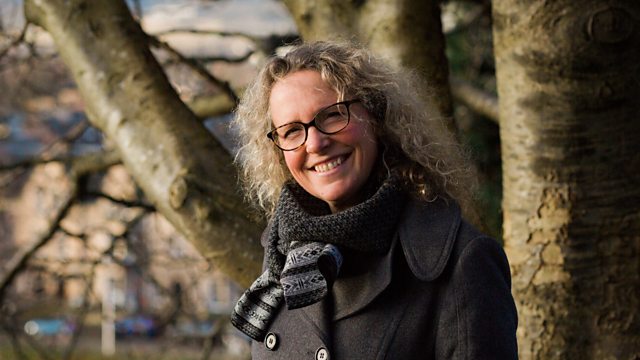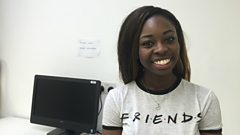Donating your body to science
Pennie Latin considers whether she would or could donate her body to science
What do you want to happen to your body when you die? Cremation? Woodland Burial? Maybe you’ll have your ashes scattered at sea…perhaps you’d like to donate your body to science?
Edinburgh outlaws, Burke and Hare made a living simply because cadavers were essential to anatomical education. Today cadavers are still essential to learning and research, the difference is today donating your body to science is a very different affair.
In this edition of Brainwaves Pennie Latin looks into the who, what for and why of modern body donation. With extraordinary access to the Centre for Anatomy and Human Identification at the University of Dundee, Pennie meets the medical students in the dissecting room who learn from the cadavers, the anatomists who use them for research and hears about the pioneering Thiel method of preservation that enables the cadavers to be used for a far wider range of research than traditional preservation techniques.
Asking herself if she would donate her own body, Pennie sets out to discover what would happen to it. Her journey begins in the Val McDermid mortuary.
Last on
More episodes
Previous
Clip
-
![]()
Sotonye David West reads a eulogy to her "silent teachers"
Duration: 02:41
Pennie Latin considers if she would or could donate her body to science

Could I, would I, should I, will I donate my body to science when I die?�� That was it in a nutshell.���� I present ���˿��� Radio Scotland’s science series Brainwaves and having recently arranged the funeral of a much loved Aunt the subject of what might happen to me when I die had been playing on my mind so it seemed, well, obvious.�� We approached the Centre for Anatomy and Human Identification in Dundee (CAHID) and after a number of discussions we managed to convince the Principal Anatomist Professor Tracey Wilkinson and bequest Secretary Viv McGuire that we weren’t about to launch into a radio version of TOWIE with corpses, that what we wanted to make was a starkly honest exploration into the journey my body would take if I choose to donate it to CAHID and they agreed. We were ‘in’.�� A date was set for the recording, all our access requests were granted and I set out on one of the most thought provoking, moving, oddest and unforgettable productions of my 20 year career in ���˿��� Radio.��
If there’s an over-arching theme to my day spent at CAHID it was one of surprise.�� I tried not to approach the recording with pre-conceived ideas but it’s hard not to let your imagination run riot when you’re about to encounter the unimaginable.�� I’d never seen a dead body before let alone touched one.�� I had absolutely no idea how I’d feel about any of it.�� If I had nerves they were nerves of not knowing how I was going to react, you know you will react but you’ve got no precedent, no previous to draw on.������ As a consequence I didn’t really write a script or questions we just decided we’d run with it, the producer Dan Holland would point the mic at me and just capture my response.��
When you’re tight with nerves your senses are heightened.�� Mine were certainly heightened as we were thrown straight into the deep end and started our recording in the Dissection Room while students were doing revision.�� I remember expecting a smell – there wasn’t one – but as a radio producer I’m somewhat obsessed with sound and it was the sound of the Dissection Room which struck me first.�� I’d expected silence intercut with whispered voices, the rustle of a lab coat, the hushed, furrow-browed reverence of the morgue of my imagination.�� What I got sounded through headphones more like a good natured Café minus the coffee machine.�� Laughter, conversation, discussion, noise.�� Lots of noise. ��It all felt so weirdly normal.���� And it was normal, surprisingly rapidly.�� I stood in the middle of the bright, clean , clinical room, a handful of students chatting and working around me while I waited for my thumping heart to abate and thought about how I felt about the 40 or so cadavers (the clinical term for the dead bodies) that surrounded me.�� Initially I felt just massively out of my comfort zone then that quickly turned to being intrigued and slightly shocked.�� Shocked at the expressions of the cadavers in particular.�� Expressions?���� I can think of no other way to describe it.�� I’d imagined shut eyes and a gentle sleeping countenance, I hadn’t at any time pictured heads being flung back, mouths open in a shout, eyes wide.�� Disturbingly it felt like life had been wrenched from these bodies, death didn’t steal them away, it dragged them kicking and screaming.�� It might have been just a result of the embalming process, the Theil Method which is used for all the bodies at CAHID, I didn’t ask, I should have, but it caught me off guard.��
In my head when I’d pictured making this programme I’d imagined myself on the gurney, pictured the cold of the metal trolley against my flesh, saw myself naked with all my myriad imperfections exposed.�� I cringed at the idea of students prodding dimpled thighs or a slumped breast but the reality of death is entirely different.������ The embarrassment of imperfection is married to life, to the desire to appeal to others.�� Looking at a dead body it wasn’t the imperfections which hit me it was subtle intimacies which largely go un-noticed in life.�� The tiny hairs round an ear lobe, lashes below a gaping eye, holding the hand of the dead man I was standing beside I found myself studying the length of his fingers and the shape of his carefully manicured nails.���� It made me wonder about him, what he did in life, what he was like, what brought him to donate his body.���� However hard you try to distance yourself from the fact that you’re working with a dead body I still found it impossible to uncouple that curiosity.����
And that curiosity was something I shared with students around me.�� They too wonder about the bodies they dissect, they often give their cadavers a name and it was one fourth year medical student, Sotonye, who finally caused me to unravel.���� Bright, beautiful, bouncing with life, Sotonye explained to me how she chatted away to her cadaver each day, thanking them at the end of each session and saying goodbye.�� As I listened to her speak tears poured down my face. I was hugely moved by her compassion but also moved by the extraordinary generosity of those anonymous donors.�� But why does that generosity matter?�� Thanks to the Theil method of body preservation, which was introduced in early 90s and renders the cadavers much more flexible and life like, the staff and students at Dundee can use the donated bodies to practise all manner of medical and surgical procedures.�� They can intubate, ventilate, practise laparoscopy, endoscopy, bronchoscopy and perform a wide range of dentistry.�� Now I don’t pretend to have the first clue what any of those procedures involve but if I ever have any of them performed on me I know I’d rather the practitioner concerned had learnt their craft on a real body rather than an artificial one, wouldn’t you?�� And we haven’t even touched on the pioneering research these bodies allow for like the current research at Dundee into new types of heart valve and pacemakers.����
There’s little doubt donating your body to science is not for everyone.�� For me, spending time with the students and staff at CAHID was an unforgettable experience.�� Their genuine and heart felt respect and gratitude to the body donors was unquestionable and the huge value they place on being able to dissect and learn with a real body was clearly evident.�� As to whether I could, should, would, will donate my body to science, I think the answer is now a resounding yes.
��
��
Broadcasts
- Tue 2 Feb 2016 13:30���˿��� Radio Scotland
- Sun 7 Feb 2016 07:00���˿��� Radio Scotland
- Sun 2 Oct 2022 06:00���˿��� Radio Scotland except Highlands and Islands
Podcast
-
![]()
Brainwaves
Pennie Latin explores the science behind the everyday.



